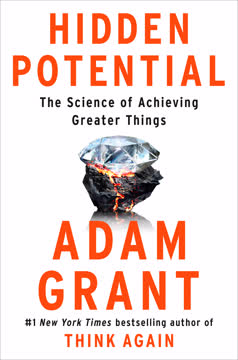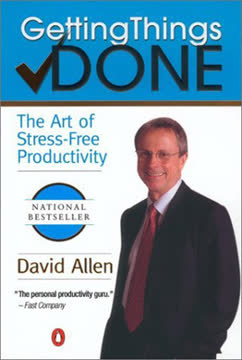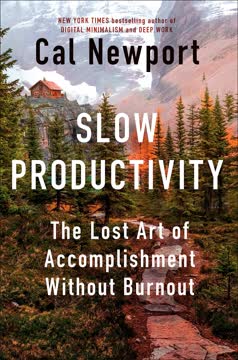Key Takeaways
1. Embrace Change and Face Reality Decisively
The art of leading (he prefers “leading” to “managing”) comes down to one simple thing: Determining and facing reality—about situations, products, and people—and then acting quickly and decisively on that reality.
Confront the truth. Jack Welch believed that successful leaders must unflinchingly face the reality of their business environment, no matter how difficult or painful. This means acknowledging competitive threats, market shifts, and internal weaknesses without denial or delay. Ignoring reality is the surest path to failure.
Act swiftly. Once reality is faced, decisive action is paramount. Welch's early tenure at GE was marked by rapid, often controversial, decisions to restructure the company, shedding businesses that couldn't be market leaders and investing in those that could. This included bold moves like selling traditional housewares and acquiring high-tech or service-oriented companies.
Change is opportunity. Rather than fearing change, Welch saw it as an exciting opportunity to reinvent GE. From the initial restructuring to later initiatives like Work-Out and Six Sigma, he constantly rearranged the company's agenda, believing that standing still was the riskiest strategy in a rapidly evolving world.
2. Lead People, Don't Just Manage Processes
If it were up to him, no one would be called a manager. Instead, he much prefers the term leader.
Inspire, don't control. Welch distinguished sharply between managers who control, complicate, and stifle, and leaders who inspire, simplify, and energize. He believed traditional managers focused too much on monitoring and bureaucracy, hindering speed and innovation. True leaders create a clear vision and empower others to achieve it.
Focus on values, not just numbers. While financial results were critical, Welch emphasized that numbers were the product of a strong culture and engaged people, not the vision itself. He prioritized leaders who embodied GE's values—passion for excellence, openness, self-confidence, energy—even over those who delivered short-term numbers but didn't fit the culture.
Get out of the way. A key task of a leader is to put the best people in the right roles, provide resources, and then step back. Welch didn't micromanage; he focused on strategic direction, talent allocation, and transferring ideas, trusting his business leaders to run their operations effectively.
3. Communicate Simply, Consistently, and Relentlessly
Simplicity, consistency, and repetition—that’s how you get through.
Keep it simple. Welch believed business was fundamentally simple and urged leaders to avoid unnecessary complexity. Simple messages travel faster and are easier for everyone to understand and act upon, from the factory floor to senior management.
Be relentlessly consistent. Once a clear, simple message or vision is established, it must be repeated over and over, relentlessly and consistently, across all audiences—employees, shareholders, analysts, and the public. This constant drumming ensures the message sinks in and becomes embedded in the company culture.
Follow up. Communication isn't just about talking; it's about ensuring the message translates into action. Welch insisted on follow-up, checking constantly to see if goals were being pursued and values were being lived, reinforcing that the message wasn't just rhetoric but a mandate for behavior.
4. Dominate Your Market or Exit
When you’re number four or five in a market, when number one sneezes, you get pneumonia.
Be #1 or #2. A core strategy for Welch was that GE businesses must be either the first or second strongest player in their market. This position provides competitive advantage, control over destiny, and the resources needed for global competition.
Fix, close, or sell. For businesses that weren't market leaders, Welch applied a stark reality test: could they be fixed to become #1 or #2? If not, they were closed or sold. This painful process eliminated weaker businesses that drained resources and allowed GE to focus investment on winners.
Bold acquisitions. Achieving market leadership sometimes required looking outside. Welch wasn't afraid of large, strategic acquisitions, like RCA (including NBC), to enter new, high-growth markets or strengthen existing positions, even if it meant shedding traditional GE businesses.
5. Fight Bureaucracy and Be Fast Like a Small Company
Every layer is a bad layer.
Delayer the organization. Welch viewed bureaucracy as the enemy of speed, simplicity, and self-confidence. He aggressively removed layers of management, flattening the organization to speed up communication and decision-making, bringing leaders closer to the action.
Cultivate speed. Speed was an indispensable ingredient in competitiveness for Welch. He pushed for decisions to be made quickly, face-to-face, eliminating unnecessary reviews and approvals. This bias for speed helped GE outmaneuver slower, more bureaucratic competitors.
Think small. Welch aimed to combine the resources of a large corporation with the agility, hunger, and spirit of a small company. Small companies are typically faster, more informal, waste less, and keep leaders visible, qualities he sought to instill throughout GE.
6. Tear Down Boundaries and Build a Learning Culture
The operative assumption today is that someone, somewhere, has a better idea; and the operative compulsion is to find out who has that better idea, learn it, and put it into action—fast.
Eliminate internal barriers. Welch saw boundaries everywhere in traditional large companies: between functions, management layers, and even between full-time and part-time employees. He championed "boundarylessness" to foster open communication and collaboration across the organization.
Learn from anywhere. A key aspect of boundarylessness was creating a voracious learning culture. GE actively sought out best practices and ideas not just from within its diverse businesses, but also from customers, suppliers, and even competitors, embracing "legitimate plagiarism."
Share knowledge rapidly. The value of learning lay in its application. GE focused on rapidly transferring ideas and best practices across its diverse businesses, leveraging its unique structure as a competitive advantage. Forums like the Corporate Executive Council facilitated this crucial exchange.
7. Involve and Empower Every Employee Through Work-Out
The way to harness the power of these people is to protect them, not to sit on them, but to turn them loose, let them go—get the management layers off their backs, the bureaucratic shackles off their feet, and the functional barriers out of their way.
Tap into collective intelligence. Welch recognized that the people closest to the work often had the best ideas for improvement. He sought to unleash the energy and intelligence of every employee, moving beyond a command-and-control model to one of high involvement.
Work-Out sessions. The Work-Out program was a revolutionary initiative designed to empower employees by giving them a direct voice. In town-meeting style sessions, employees brainstormed solutions to problems and presented proposals directly to managers, who had to respond on the spot.
Give voice, demand responsibility. Work-Out aimed to remove the "boss element" and foster open dialogue. By giving employees a voice in decision-making, Welch also instilled a sense of ownership and responsibility for the business's success, making them feel valued and engaged.
8. Set Aggressive Stretch Goals to Achieve the Impossible
We have found that by reaching for what appears to be the impossible, we often actually do the impossible; and even when we don’t quite make it, we inevitably wind up doing much better than we would have done.
Dream big. Welch encouraged setting "stretch" goals – targets that seemed almost impossible to reach based on current capabilities. This approach forced people to think creatively, challenge conventional wisdom, and find entirely new ways of operating, rather than settling for incremental improvements.
Energize, don't negotiate. Stretch targets replaced tedious budget negotiations focused on minimal numbers. They were designed to energize teams and inspire breakthrough thinking, shifting the focus from hitting a number to constantly striving for peak performance.
Reward progress. Crucially, Welch emphasized rewarding progress towards stretch goals, not punishing shortfalls. This created an environment where people felt safe taking big swings, knowing they would be celebrated for significant improvement even if they didn't hit the seemingly unattainable target.
9. Drive Growth Through Global Expansion and Services
The opportunity for growth in product services is unlimited.
Go global aggressively. Recognizing that future growth lay beyond domestic borders, Welch pushed GE to become a truly global company. He invested heavily in overseas markets through acquisitions, joint ventures, and building local teams, aiming for international revenues to account for half of GE's total.
Shift to services. Welch strategically moved GE towards becoming a service-oriented company, leveraging its massive installed base of industrial equipment. Services, including maintenance, financing, and digital solutions, offered higher growth potential and margins than traditional manufacturing alone.
GE Capital as a growth engine. GE Capital Services became a powerhouse, driving a significant portion of GE's overall growth and profits. Its ability to innovate in financial services, make strategic acquisitions, and expand globally exemplified Welch's vision for a dynamic, service-driven enterprise.
10. Obsess Over Quality and Implement Six Sigma
You’ve got to be passionate lunatics about the quality issue.
Quality as a competitive advantage. While GE products were always considered good, Welch realized the company wasn't achieving world-class quality levels like Motorola or Toyota. He made quality an obsession, aiming to make GE products and services so superior they became the customer's "only real value choice."
Implement Six Sigma. Welch adopted and aggressively implemented the Six Sigma methodology, a data-driven approach to reducing defects in processes to near perfection. This wasn't just a slogan; it was a rigorous discipline applied across all GE businesses, from manufacturing to financial transactions.
Quality is everyone's job. Welch embedded Six Sigma throughout the organization, training thousands of employees as "black belts" and "green belts." He tied promotions and bonuses to quality results, making it clear that commitment to Six Sigma was essential for anyone who wanted to be a leader at GE.
11. Uphold Unyielding Integrity
We have no police force, no jails. We must rely on the integrity of our people as our first defense.
Integrity is non-negotiable. Despite facing numerous ethical lapses during his tenure, Welch maintained that integrity was the absolute foundation of GE's success. He insisted on the highest ethical standards and made it clear that there was zero tolerance for violations.
One strike and you're out. Unlike performance issues, which might warrant second chances, Welch enforced a strict policy: any clear integrity violation resulted in immediate dismissal. This tough stance aimed to send an unequivocal message throughout the company.
Lead by example. While acknowledging that lapses could occur in any large organization, Welch stressed that leaders must set the example for ethical conduct. He personally addressed scandals head-on, refusing to make excuses and reinforcing the company's commitment to honesty and fairness.
12. Cultivate Leaders and Plan for the Future
The ability to energize is the ingredient that counts.
Develop internal talent. Welch placed immense value on developing leaders from within GE. Institutions like Crotonville served as crucial centers for training, debate, and instilling the company's values and management philosophies in future leaders.
Identify and nurture "A" players. Welch categorized employees as A's (top performers, embody values), B's (solid contributors), and C's (underperformers, don't fit values). He focused on keeping and promoting A's, developing B's, and moving C's out, believing a winning team required only the best talent.
Plan for succession. Welch was constantly thinking about his successor, viewing it as his most important task. He sought someone with energy, vision, courage, and a global mindset, committed to continuing GE's trajectory while inevitably putting their own stamp on the company.
Last updated:
Review Summary
Jack Welch and the GE Way receives mixed reviews, with an average rating of 3.70 out of 5. Readers appreciate Welch's leadership insights, simplicity in business, and focus on change and quality. The book is praised for its readability and inspiration, particularly for those interested in business strategy. However, some criticize it as biased and overly favorable towards Welch. Readers note the book's dated content and lack of balance in portraying GE's challenges. Despite these drawbacks, many find value in Welch's management principles and their impact on GE's success.
Similar Books










Download PDF
Download EPUB
.epub digital book format is ideal for reading ebooks on phones, tablets, and e-readers.




